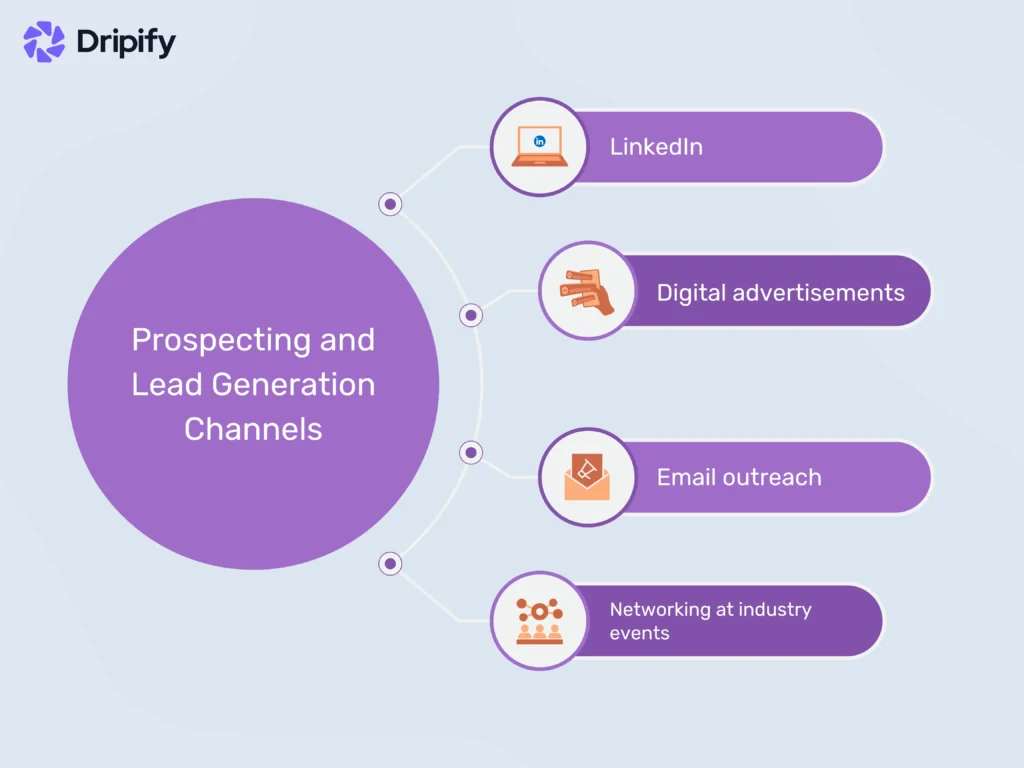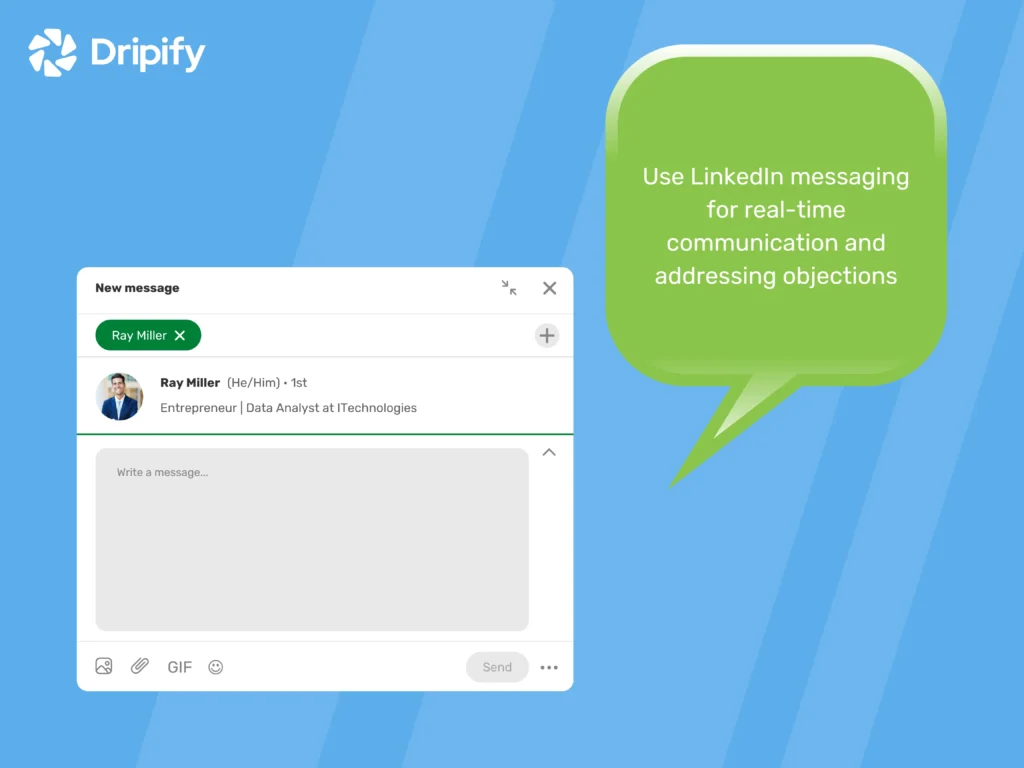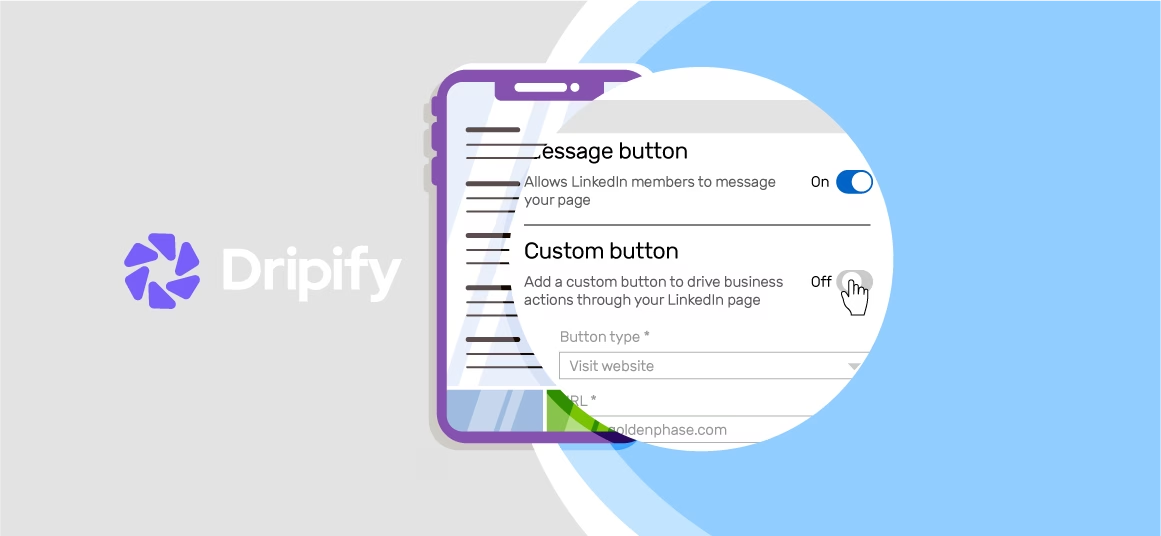Are you tired of juggling sales tasks on LinkedIn that don’t lead to closing deals? It is good to know that sales professionals spend about 40% of their time on actual selling activities. The remaining 60% often goes to stuff like CRM updates, filling reports, and building sales pipelines.
These tasks are important, but they can pull your focus away from activities that lead to more revenue generation. And as you know, your main goal as a salesperson is to seal deals. This means it is super important to understand your leads.
- What Is a Sales Pipeline?
- What Is the Difference Between a Sales Pipeline and a Sales Funnel?
- What Are the Stages of a Sales Pipeline?
- 1. Prospecting and Lead Generation
- 2. Qualifying Your Leads
- 3. Establish Relationships
- 4. Pitch Your Product or Service
- 5. Present a Proposal
- 6. Negotiation
- 7. Seal the Deal
- Important Sales Pipeline Metrics
- Integrating Your Sales Pipeline with LinkedIn
LinkedIn helps you manage your sales pipeline more efficiently.
When you use LinkedIn for pipeline management, you get insights into each customer’s position in your sales process. That means you can automate outreach and set up sales meetings smoothly.
We’ll explain how to build a sales pipeline on LinkedIn.
What Is a Sales Pipeline?
A sales pipeline is a roadmap that shows you the journey a potential customer takes from first contact to closing the deal.
Each step in the pipeline represents a specific action or milestone in the sales process, like qualifying leads, giving product demos, negotiating terms, and finally, making the sale.
When you bring this journey into a visual form, you can better understand where each prospect stands and tailor your approach accordingly.
The goal of the sales pipeline lies in its ability to bring structure and clarity to your sales efforts. It helps you prioritize leads, predict revenue, and spot any roadblocks along the way.
What Is the Difference Between a Sales Pipeline and a Sales Funnel?
The sales pipeline is about the seller’s journey, tracking deals from start to finish. It maps out a prospect’s steps in the sales process, like lead generation, qualification, meetings, proposals, closing, and follow-up.
On the other hand, the sales funnel looks at things from the customer’s perspective, tracing their path from discovering a brand to making a purchase. It shows how prospects move through stages like awareness, interest, evaluation, and purchase decisions.
What Are the Stages of a Sales Pipeline?
The phases in your sales pipeline can differ, depending on the industry you’re in. But generally, most sales professionals agree on seven common stages that act as a guiding principle in B2B sales. These stages are like secret codes that successful sales teams follow to achieve their goals and drive growth.
Let’s walk through the seven crucial stages of a sales pipeline you should follow to increase sales.
1. Prospecting and Lead Generation

The first step in a pipeline is sales prospecting and lead generation. You identify, connect, and engage with your potential clients or customers in this stage.
You can use multiple channels to achieve your goal here, including LinkedIn, digital advertisements, email outreach, and even through networking at industry events. In doing so, you have to be creative and collect as many leads as possible.
Remember, this is a crucial step as it will determine the next phases in the sales pipeline.
2. Qualifying Your Leads
Once you’ve enough leads, it’s time to qualify them.
Lead qualification will you determine if potential customers are ready to buy. The goal is to find and prioritize leads who are most likely to become customers.
During this process, you look at things like a lead’s interest, budget, authority, and specific needs. Using the findings, you can make the sales process smoother, boost conversion rates, and target prospects who are more likely to close deals.
The most important elements of lead qualification include figuring out if the lead is a good fit, scoring leads, segmenting them, asking the right questions, and using frameworks like BANT or MEDDIC. These methods help guide the qualification process more effectively.
Here’s a quick checklist for lead qualification:
- How much can they spend?
- When do they plan to buy?
- Why would they want to purchase your product or service?
- How well do they know your offer?
- Do they want to fulfil their needs urgently?
3. Establish Relationships
This is where you start to build relationships with your potential customers. You want to understand their needs and make them feel heard. This means you must communicate well, listen actively, and offer solutions that resonate with them.
Remember, building connections isn’t just about making a sale but more about building trust and credibility. You want to show that you’re reliable and knowledgeable.
This might involve things like:
- Creating tailored and helpful content;
- Sharing industry insights;
- Making personalized outreach;
- Meeting at networking events;
- Follow-up calls;
- Engaging on social media.
The goal here is to move your prospects from just knowing about your product or service to being genuinely interested in it.
4. Pitch Your Product or Service

Sales pitch is the stage where you get to show potential customers your product value and how your products or services can solve their problems and make their lives easier.
When presenting your solutions, it is essential to highlight why your offer is the best choice in terms of cost, convenience, and overall value. Plus, you must be ready to address any potential clients’ concerns, and tailor your pitch to each person to show them exactly how your solution meets their needs.
Be sure to have your sales materials handy here. This will help you provide all the details your leads need to make a decision. It will also help you answer questions and tackle any objections proactively. Using automated email campaign tools to guide the leads through the process smoothly is a good idea.
5. Present a Proposal
At this step, things get exciting because you’re about to lay out your offer to the potential customer. It is time to close the deal and secure that commitment from the customer.
Be sure to take a moment to review your pricing, address any remaining concerns, and make a tailored sales proposal that hits all the right notes. You want to show them exactly how your solution can solve their problems and improve their lives.
When presenting your proposal, keep it clear and straightforward. You don’t want to confuse your leads with complicated jargon or terms they might not understand. Plus, don’t forget to back up your proposal with some evidence. For instance, you could share case studies, testimonials, or product samples to show them you’re the real deal.
But hey, let’s not forget about addressing their concerns. If they have any doubts or objections, tackle them head-on in your proposal. Offer solutions or alternatives to ease their worries.
Your key ingredient for this stage is your Unique Selling Proposition (USP).
It’s the standout feature that sets you apart from the crowd! Make sure to keep it concise and catchy, with a tagline that clearly communicates why you’re the top choice.
For instance, say your product boasts exceptional versatility. In that case, your Unique Selling Proposition (USP) might be something like, “Transform your possibilities with our groundbreaking [Product name] – unlocking versatility that sets new standards.”
Alternatively, if your product emphasizes eco-friendliness, consider a USP such as, “Embrace sustainability with our innovative [Product name] – leading the way towards a greener future.”
But remember, your sales proposal must clearly state your pricing, explaining any additional benefits or features included in your package. If your prices are negotiable, make sure to mention it in your proposal. This will lead to further discussion and highlight your flexibility, which can be a winning card in closing the deal.
6. Negotiation

This phase is all about finding common ground with your potential customers. It’s where you discuss details like pricing, terms of service, delivery date, and any extras they may need.
- First off, listen closely to what they’re saying. Understand their needs and why certain terms matter to them;
- Highlight the value of your product, solution, or service;
- Be flexible because negotiation is about give and take;
- Set clear boundaries. Know your limits and be willing to walk away if the terms aren’t right for you;
- Make sure to document everything. This helps avoid any misunderstandings down the line and ensures everyone’s on the same page.
Remember to approach negotiations with an open mind and clear communication. This way, you’ll find a solution that satisfies both you and your ideal customer.
7. Seal the Deal
Closing the sale is the ultimate goal of every sales journey. It’s where the magic happens and deals are sealed. But before you get ahead of yourself, there are a few key steps to ensure the deal not only closes but leaves your customer thrilled with their decision.
By this point, trust should already be established. Now, it’s time to turn up the charm and persuasion. Think about how you can sweeten the deal to make it irresistible.
Consider offering a discount, throwing in an enticing freebie, a clear roadmap of the next steps or providing a special promotion just for them. You want to offer value that they simply can’t resist. It’s about making the deal even more appealing, helping them see the immediate and long-term benefits of choosing you.
So, go ahead, put those final touches on your pitch, and get ready to close the sale like a pro. With the right strategy and a dash of creativity, your customer will say yes in no time!
Important Sales Pipeline Metrics
Alright, now let’s explore the important sales pipeline metrics – the vital signs of your sales process. These metrics help you understand how well your sales pipeline is performing and where improvements can be made.

- Number of Qualified Leads: This metric gives insight into the total count of leads that meet your predefined criteria for being considered qualified prospects. It helps assess the quantity and quality of potential customers entering your sales pipeline;
- MQL to SQL Conversion Rate: The MQL to SQL Conversion Rate measures the percentage of Marketing Qualified Leads (MQLs) that progress to become Sales Qualified Leads (SQLs). It indicates the effectiveness of your marketing efforts in generating leads that are deemed valuable by the sales team. Learn why sales teams need Dripify automation tool;
- Win Rate: Win Rate represents the percentage of sales opportunities that result in closed deals. It shows how successful your sales team is at converting leads into paying customers, providing insights into sales performance and effectiveness;
- Average Deal Size: This metric calculates the average monetary value of closed deals. It helps assess the revenue potential of your sales pipeline and identifies opportunities for increasing the value of individual transactions;
- Customer Acquisition Cost (CAC): Customer Acquisition Cost measures the total expenses incurred in acquiring a new customer. It includes all marketing and sales costs associated with attracting and converting leads into customers;
- Customer Lifetime Value (CLV): Customer Lifetime Value estimates the total revenue generated by a customer throughout their relationship with your business. It helps determine the long-term profitability of acquiring and retaining customers;
- LTV to CAC Ratio: The LTV to CAC Ratio compares the Customer Lifetime Value to the Customer Acquisition Cost. It assesses the efficiency and profitability of your customer acquisition efforts, with a higher ratio indicating better returns on investment;
- Average Sales Cycle: The Average Sales Cycle measures the median duration it takes to seal a deal from the initial contact to finalizing the sale. It provides insights into the efficiency and effectiveness of your sales process.

Integrating Your Sales Pipeline with LinkedIn
So, how to build a sales pipeline on LinkedIn? Here’s how to go about it:
- Prospecting and Generating Leads – For starters, using LinkedIn for sales prospecting is the best. You can tap into the platform’s search tools to find potential leads. Plus, join relevant groups and engage with prospects through comments and content sharing. This helps you build a network of potential customers;
- Qualifying Leads – Once you’ve identified leads, use LinkedIn to learn more about them. Check out their profiles, endorsements, and recommendations to gauge their suitability. Also, send personalized messages to ask qualifying questions and determine their level of interest;
- Building Relationships – Remember, it’s all about building relationships on LinkedIn. Consider liking and commenting on prospects’ posts, sharing valuable insights, and sending a LinkedIn connection requests. This helps you establish trust and credibility with potential customers;
- Present Your Product or Service – Showcase your offerings on LinkedIn through posts, articles, or direct messages. You can even share success stories and product demos to demonstrate value. Use ChatGPT for LinkedIn messaging to generate follow-ups on presentations and address any concerns;
- Negotiation – Use the results from the LinkedIn Sales Insights tool to negotiate terms and finalize details with prospects. You may also want to use LinkedIn messaging for real-time communication and addressing objections;
- Closing the Sale – After closing a deal, stay active on LinkedIn and engage with your customers. It is also a good idea to ask for reviews and post your success stories of how your product or service helped your customers.
Conclusion
As you see, creating a sales pipeline on LinkedIn is a savvy move that can supercharge your lead generation and sales success. Use ChatGPT to streamline your sales process on LinkedIn, nurture client relationships, and boost your revenue. The secret to winning lies in understanding your audience, using the right lead channels, and skillfully managing leads at every pipeline stage.


![Email Outreach Tracking [Tips, Tricks and Tools]](https://dripify.io/wp-content/uploads/2025/02/11-7-png.avif)
![Create a Prospecting Plan [+8 Prospecting Methods]](https://dripify.io/wp-content/uploads/2025/02/11-png.avif)